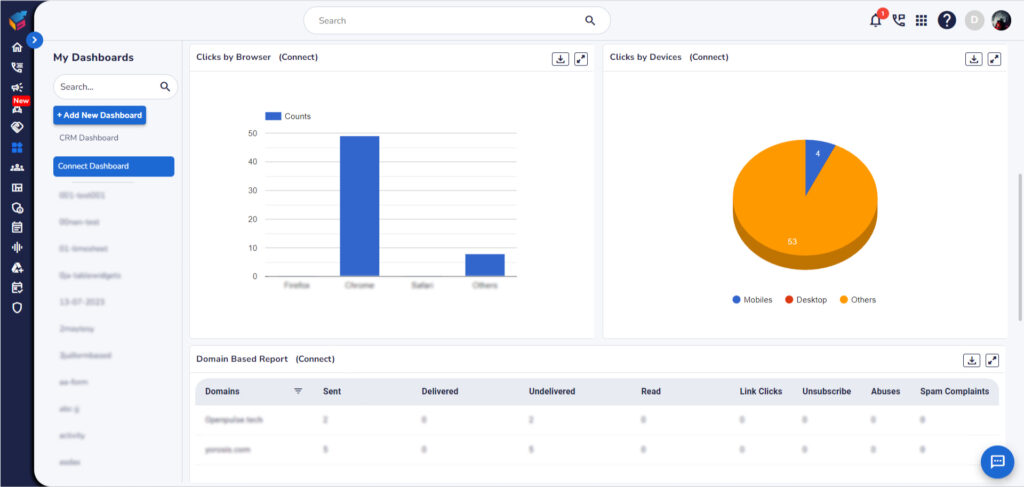Table of Contents
It might be time for an audit — and we’re not talking about your taxes. When was the last time your team did a thorough audit of your marketing plan? There are countless moving parts, and it’s easy for months and even years to slip by without making the updates and improvements needed to help your business grow.
A yearly audit of the software, strategies, and processes your marketing team uses can save you from costly mistakes and help you:
- Level up every aspect of your marketing strategy
- Capture more leads and create more fans
- Gain a well-rounded view of how your marketing plan is serving your business
- Rest assured nothing is slipping through the cracks
All these benefits are great, but marketing audits can be overwhelming, leaving you and your team wondering where to begin. That’s why we’ve compiled a list of the top 10 parts of your marketing plan that could benefit from an audit — from your Instagram account and content strategy to your business automation software.
Benefits of Marketing and Business Automation
Marketing and business automation offer a myriad of benefits, including increased efficiency, cost savings, and improved accuracy. By eliminating manual tasks, automation allows teams to focus on strategic activities, leading to higher productivity and faster results. Additionally, automation enhances the customer experience by enabling personalized interactions and targeted marketing campaigns. It also improves data management, scalability, and competitive advantage, as businesses can respond quickly to market changes. Furthermore, automation streamlines processes integrates with other systems, and improves marketing ROI, making it an essential tool for modern organizations seeking growth and success.
Revamp Your Marketing Automation by Auditing 10 Key Areas
You’ll also find resources to guide your audits and help take the stress out of making improvements.
Here are 10 key areas to consider when auditing your business automation strategies:
- Workflow Engine: A workflow engine is a component that is responsible for interpreting and executing the workflow definitions. It is the core component that manages the workflow’s lifecycle, including task sequencing, resource allocation, and error handling. The workflow engine executes the logic defined in the workflow, such as conditional statements and loops, to ensure that tasks are executed in the correct sequence and according to the defined rules.
- Workflow Orchestrator: A workflow orchestrator, on the other hand, is a higher-level tool that manages and coordinates multiple workflows across different systems or services. It provides a centralized platform for designing, monitoring, and optimizing workflows. A workflow orchestrator may use one or more workflow engines to execute the individual workflows but adds an additional layer of abstraction for managing the overall workflow ecosystem.
Workflow Orchestration Example
Workflow orchestration is the process of automating and coordinating tasks, processes, and workflows within an organization. One common example of workflow orchestration is the approval workflow.
Let’s consider a scenario where a company needs to automate the approval process for employee expense reports. The approval workflow could be orchestrated as follows:
- Social marketing presence: Your business’s social presence might not have crossed your mind as something to audit, but you should add it to your list. An audit of your team’s current social content strategy can help you see what you may need to change to grow your audience.
- Ad strategy: Where you decide to advertise matters, and an audit can provide assurance that you’re investing your marketing dollars wisely. Start by taking inventory of every campaign you’re running and see what kind of ROI they’re producing.
- Content: Content is a great way to provide value to leads and customers, so like all good things, it deserves some attention. And because content directly serves and impacts customers, it should be a priority on your audit list.
- AI strategy: AI is rapidly evolving and still relatively new to the marketing world, so it’s understandable if your team isn’t using it to its full capability yet. However, taking inventory of your AI usage can help you start!

- Business automation strategy: The capabilities of automation are so vast that it can be hard to know where to start automating first. If you feel like you could be automating more or just want to check how your automations stack up against the gold standard, then evaluating your business automation strategy is the way forward.
- Customer journey: Before you dive into your small business automation strategy, look at your customer journey. After all, your customer journey is what informs and guides every one of your automations.
- Customer/lead relationship building efforts: Nurturing leads into customers and customers into fans who come back for more is how your business scales. An evaluation of how exactly you’re engaging with these groups can help you more effectively communicate with them so they move through your sales funnel.
- CRM and business automation software: Your CRM and business automation tools are crucial to your marketing game plan. If you’re using this software to its full potential, it’s the backbone of your entire strategy.
- SEO strategy: Search engine optimization is how you get your content to show up in search results, which can lead to more people discovering your business. But SEO best practices change periodically, so your strategy needs to adjust as well.
- How you package your offerings: This audit may not be one many people think about. By completing this evaluation and rethinking how you package your products or services, you could open up a world of new possibilities (and revenue) for your business.
If that’s the case, feel free to check out YoroCRM, where you can find blogs, webinars, videos, guides, and more to help as you evaluate and improve your marketing processes.




